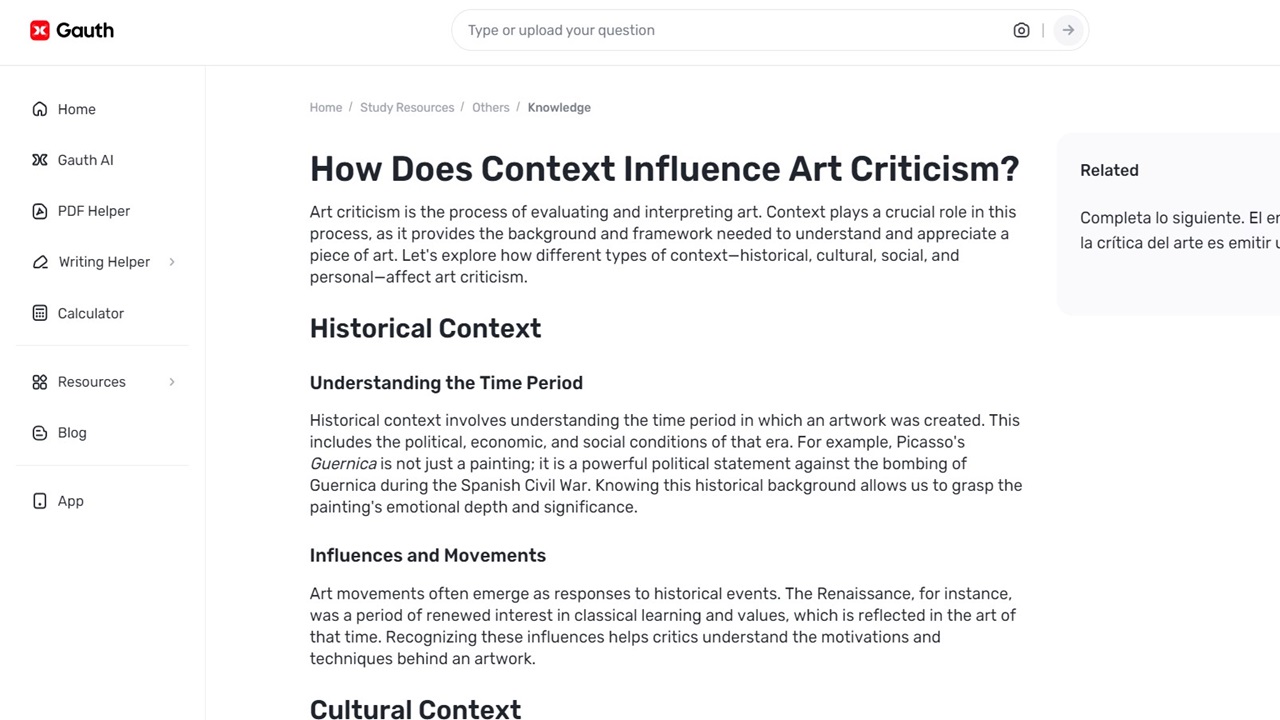Art critique is not just the ability to appreciate the aesthetic values of the artwork but also the ability to know the history and culture of the artwork. However, the analysis of this context and its relation to the artwork can be challenging if the person has no background in history or art history. Thanks to Gauth, there is no more guessing when it comes to art critique and history, and questions like how does context influence art critiques are explained in a simple manner, which makes art analysis even more beneficial.
Bridging Art and History Seamlessly
Art and history cannot be separated because most of the artworks depict the political, social, and cultural setting of the time the art was made. As a result, Gauth seamlessly introduces the link and offers users the background that preceded the creation of a specific work. For instance, if a painting under analysis belongs to the Romantic period, Gauth provides information about the historical context of Romanticism, the French Revolution, and the idea of individualism. By using Gauth, a user can view the artwork from the angle of the time it was made and, therefore, understand the meaning and intention behind the artwork.
Customizing Context for Each Artwork
Not all historical contexts are created equal, even within the same period. Gauth excels at customizing historical context to fit the specific artwork under examination. This tailored approach ensures that the critique is not generic but rather intimately connected to the piece in question. For instance, while analyzing a work by Frida Kahlo, Gauth would not only discuss the broader context of Mexican history and culture but also delve into the personal experiences that influenced her work. Gauth might explore how Kahlo’s health struggles, her tumultuous marriage with Diego Rivera, and her engagement with indigenous Mexican culture are reflected in her art. This personalized approach allows for a more nuanced and detailed critique, offering insights that are directly relevant to the artwork.
Enhancing Critique with Comparative Analysis
Gauth enhances art critique by offering comparative analysis, showing how different pieces relate to one another and their shared historical contexts. For instance, when studying the works of a modernist painter such as Pablo Picasso, Gauth might compare his work with that of his contemporaries such as Georges Braque or his precursors such as African tribal art. It could explain how the historical setting of early twentieth-century Europe and the effects of the First and Second World Wars and the Spanish Civil War informed the development of Cubism. This comparative analysis also adds to the critique because users can see parts of the artwork that they would not have considered if they were only comparing the artwork to itself.
Making Historical Context Engaging and Accessible
This is because it may be difficult to understand the history of an artwork if one is not well conversant with history. To overcome this problem, Gauth makes sure that history is presented in a simple and fun way and uses tools that will assist the audience in grasping the content easily. For instance, Gauth might use timelines, maps, and multimedia elements to illustrate the key historical events that influenced an artist or a movement. By breaking down complex historical narratives into digestible pieces, Gauth ensures that users can easily grasp the context and apply it to their critique of the art.
Conclusion
Gauth is changing the way art critique is done by incorporating history into the analysis of artworks. In this way, Gauth helps users to create a more profound and complex perception of the artwork: it offers the possibility to fill the gap between art and history, to add historical context to each artwork, to enrich critiques with the comparative analysis of artworks, and to make historical information more engaging and easily accessible for users.
